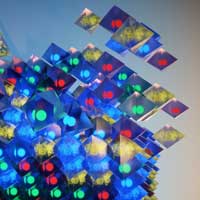 Using shape-programmable DNA frames, scientists established a new nanofabrication platform for directing nanomaterial components of different natures (inorganic and biological) into 3-D arrays with prescribed organizations; they then demonstrated the enhanced optical and catalytic functionalities possible with this platform.
Using shape-programmable DNA frames, scientists established a new nanofabrication platform for directing nanomaterial components of different natures (inorganic and biological) into 3-D arrays with prescribed organizations; they then demonstrated the enhanced optical and catalytic functionalities possible with this platform.
Monday, January 13, 2020
Nano-objects of desire: Assembling ordered nanostructures in 3D
 Using shape-programmable DNA frames, scientists established a new nanofabrication platform for directing nanomaterial components of different natures (inorganic and biological) into 3-D arrays with prescribed organizations; they then demonstrated the enhanced optical and catalytic functionalities possible with this platform.
Using shape-programmable DNA frames, scientists established a new nanofabrication platform for directing nanomaterial components of different natures (inorganic and biological) into 3-D arrays with prescribed organizations; they then demonstrated the enhanced optical and catalytic functionalities possible with this platform.
A new approach to making airplane parts, minus the massive infrastructure
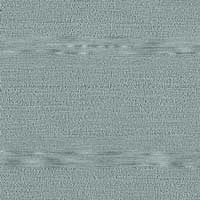 Carbon nanotube film produces aerospace-grade composites with no need for huge ovens or autoclaves.
Carbon nanotube film produces aerospace-grade composites with no need for huge ovens or autoclaves.
Engineers develop 'chameleon metals' that change surfaces in response to heat
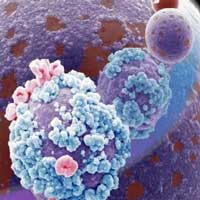 Just like a chameleon changes its skin color in response to its environment, engineers have found a way for liquid metal - and potentially solid metal - to change its surface structure in response to heat.
Just like a chameleon changes its skin color in response to its environment, engineers have found a way for liquid metal - and potentially solid metal - to change its surface structure in response to heat.
Bacteria shredding liquid metals to fight drug-resistant superbugs
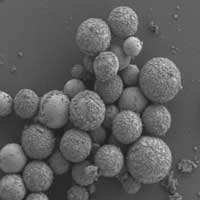 Researchers have used liquid metals to develop new bacteria-destroying technology that could be the answer to the deadly problem of antibiotic resistance.
Researchers have used liquid metals to develop new bacteria-destroying technology that could be the answer to the deadly problem of antibiotic resistance.
Divorce in a one-dimensional world
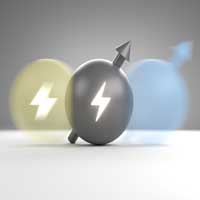 In a strictly one-dimensional quantum world, an electron's electric charge and its 'spin' are separable from each other. This fifty-year-old prediction has now been confirmed by an experiment.
In a strictly one-dimensional quantum world, an electron's electric charge and its 'spin' are separable from each other. This fifty-year-old prediction has now been confirmed by an experiment.
Generation and manipulation of spin currents for advanced electronic devices
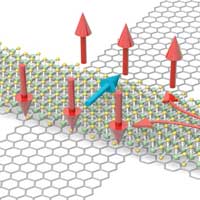 Scientists demonstrate that spin currents can be generated and manipulated in graphene-based heterostructures at room temperature. The results of this study provide relevant information on the fundamental physics of the phenomena involved and open the door to new applications, such as the development of ultra-compact electronic and low energy consumption devices and magnetic memories.
Scientists demonstrate that spin currents can be generated and manipulated in graphene-based heterostructures at room temperature. The results of this study provide relevant information on the fundamental physics of the phenomena involved and open the door to new applications, such as the development of ultra-compact electronic and low energy consumption devices and magnetic memories.
Subscribe to:
Comments (Atom)
